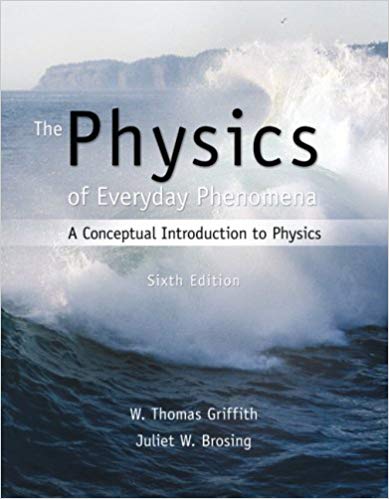Block B, with mass 5.00 kg, rests on block A, with mass 8.00 kg, which in turn
Question:
.PNG)
Fantastic news! We've Found the answer you've been seeking!
Step by Step Answer:
Related Book For 

Physics of Everyday Phenomena A conceptual Introduction to physics
ISBN: 978-0073512112
6th edition
Authors: W. Thomas Griffith, Juliet W. Brosing
Question Posted:





